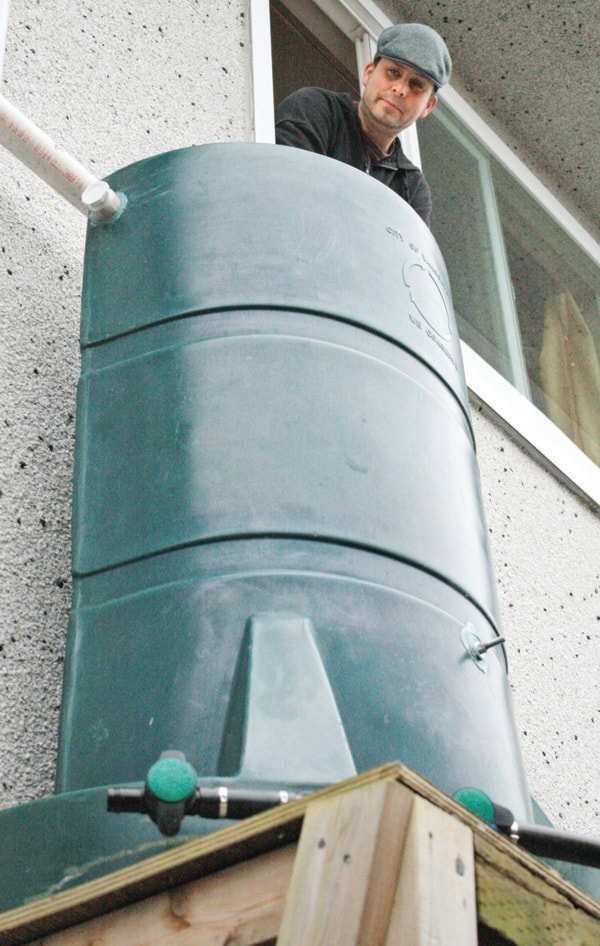Geoff Johnson is dwarfed by the green-water tank in his front yard, hiding discreetly behind a trellis-style fence.
In his backyard, a smaller half-cylinder tank sits flush against the wall.
“This overflows into another series of rain barrels under the deck,” he said, surveying his extensive garden, kept well-watered without turning on the tap.
Johnson, a permaculture educator, also uses the rain water to fill his washing machine and estimates he diverts 18,000 litres of water from city’s storm drains annually.
Soon, Johnson and others with rain catchment systems could find themselves saving money due to their efforts. Victoria city staff have recommended charging residents a separate fee for their use of storm drains, much like fees for water and sewer.
Right now, upgrades to the storm drain system are funded through general revenue. Switching to a user-fee system would provide stable funding to a chronically underfunded program.
The change would also give residents incentives to retain more rain water on their property.
It’s an idea being adopted and considered by cities across North America, explained Calvin Sandborn, legal director of UVic’s Environmental Law Centre.
“Local governments are saying we will actually give you an economic benefit to disconnecting your downspouts, to constructing a rain garden, adding soil to your lawn, planting trees, all designed to keep water on the property,” he said. Last year, the law centre presented to city council on the benefits of managing rain water on site, rather than managing storm drains.
“Historically, only one per cent of water ran off the natural landscape typically,” Sandborn said. Now, 66 per cent of water – and all the pollutants it collects – is channeled through storm drains and dumped into the creeks and oceans, rather than being absorbed into the ground.
City staff proposed two options for billing property owners for the storm drain utility.
In option one, the charge will be based simply on the size and class of property, assuming an average run-off per square metre for residential, commercial and industrial. In option two, the charge will be based on the size of impermeable or paved surface on each individual property, measured by aerial photos. In both options, residents can apply for fee reductions if they have rain-catching devices such as rain barrels.
Coun. Philippe Lucas called the recommendations the most equitable and likely to create behavioural change. On Feb. 10, he and other councillors on the environment and infrastructure committee endorsed the new utility.
If adopted by council, the changes will be implemented by 2013.
rholmen@vicnews.com
Victoria storm drains: by the numbers
• 253 kilometres of stormwater pipes
• 68 stormwater outfalls.
• $2.1 million: the annual amount set aside for storm drain maintenance
• $3.7 million: the annual amount needed to keep up with the work
